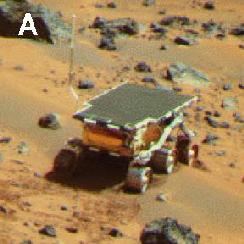This is a picture of the Rover atop the Mermaid Dune.
Click on image for full size
JPL/NASA
The Mermaid Dune
During the Mars Pathfinder Rover's exploration of the Martian surface, it traversed what scientists now call the "Mermaid Dune", covered with soils. The soil on top of Mermaid Dune seemed to have a dark gray component, indicating a possible basalt origin. Evidence of the existence of basalt would help scientists figure out part of the early volcanic history of Mars. However, when the Rover crossed the dune, it disturbed the soil and exposed a dark red soil underneath. A picture of the disturbed soil is shown here. Study of these dunes and soils contributed to an understanding of weathering processes on Mars.
There are many portions of Mars covered by equal-sloped, dune-like ridges which are oriented transverse to the wind direction, including gaint sand dunes at the south polar region. These dunes consist of particles placed in motion by the mechanism of saltation, then picked up and carried around the globe in global dust storms.
You might also be interested in:

One of the measurement objectives of the Mars Pathfinder mission was the examination of the composition and structure of the soil. As the Rover traversed the surface exploring the rocks of Mars, it also
...more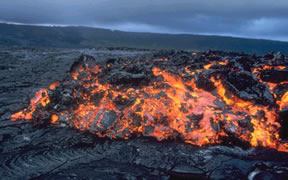
Basalt is a hard, black extrusive igneous rock. It is the most common type of rock in the Earth's crust and it makes up most of the ocean floor. The prevalence of dark minerals such as pyroxene and olivine
...more
The Mars Odyssey was launched April 7, 2001, from Cape Canaveral Air Force Station in Florida. After a six-month, 285 million-mile journey, the Odyssey arrived at Mars on October 24, 2001 (02:30 Universal
...more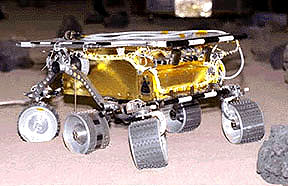
The Mars 2005 mission is still in the planning stages. It is set to launch in the year 2005.
...more
On September 12, 1997, the Mars Global Surveyor successfully entered a highly elliptical orbit around Mars. To get into the near-circular, near-polar, low-altitude orbit necessary to map the surface of
...more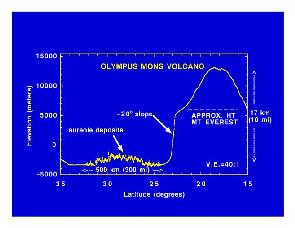
Mars Global Surveyor carries an instrument which measures the altitudes of things. The instrument is called an altimeter, or "altitude-meter". The graph to the left shows the results returned from Mars
...more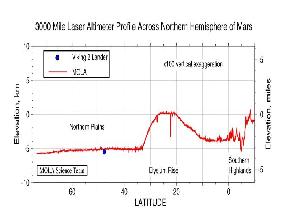
Mars Global Surveyor carries an instrument which measures the altitudes of things. The instrument is called an altimeter, or "altitude-meter". The graph to the left shows Mars Global Surveyor's measurement
...more


